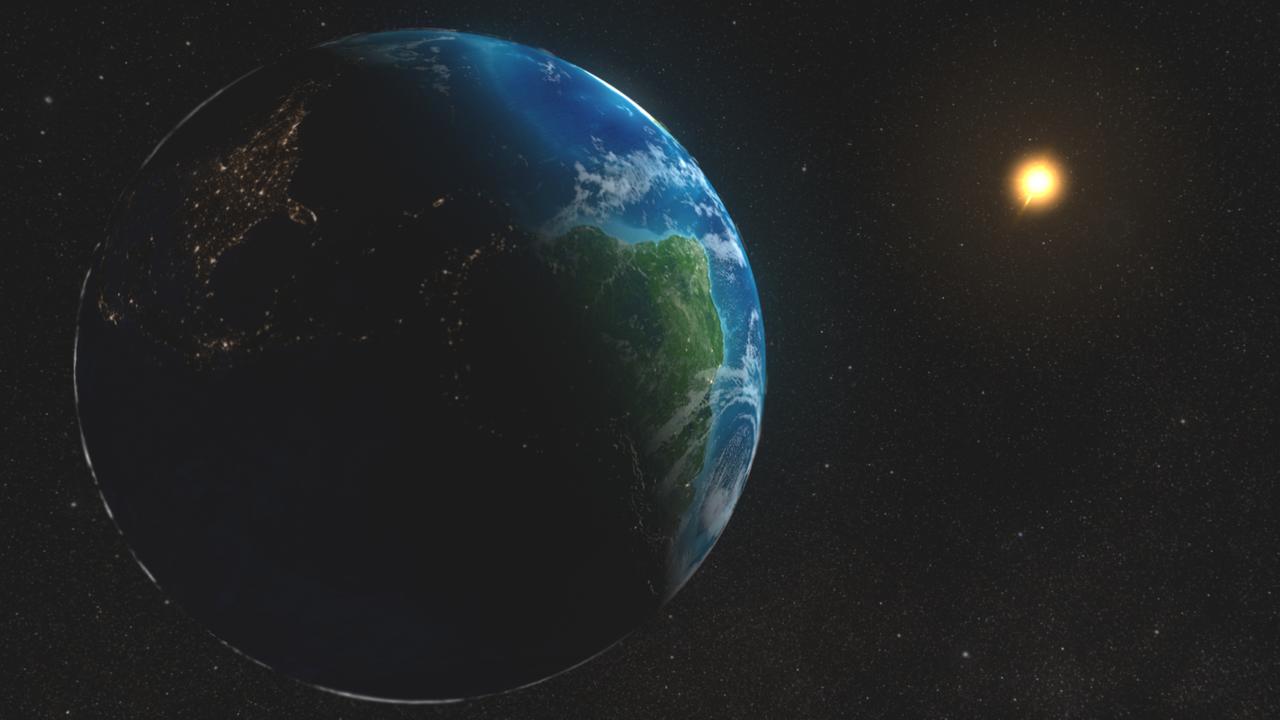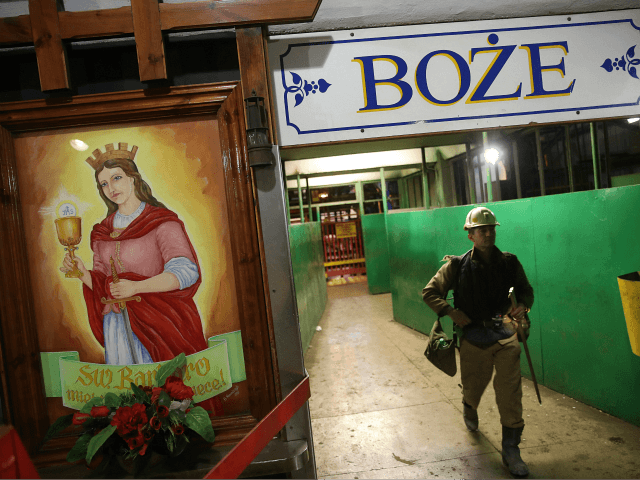11 June 2019
Soot, sulfate, dust and the climate — three ways through the fog
How much have aerosol particles slowed warming? Joyce Penner sets out priorities for a coordinated campaign of observations and modelling.
PDF version
Greenhouse gases might be the main culprits in the rapid warming of our planet, but particles in the air also play a part. Soot, dust, sulfate and other aerosols can both cool the atmosphere and warm it. Yet, nearly 30 years after the first report from the Intergovernmental Panel on Climate Change, we still don’t really know how much aerosols influence the climate1,2. These particles remain one of the greatest lingering sources of uncertainty.
Why are they so enigmatic?
First, aerosols are a zoo of tiny particles, with origins ranging from fire smoke to molecules emitted by plants (see ‘Aerosols and climate’).
Second, their climate impacts vary widely. Dark soot absorbs sunlight and warms the air. Sulfur dioxide emitted by burning fossil fuels or by volcanoes forms a haze of sulfuric acid particles that reflects incoming sunlight, lowering global temperatures. Sulfate particles act as nuclei around which water condenses, seeding clouds and increasing their reflectivity.
 Adapted from https://go.nature.com/2whhzh2
Adapted from https://go.nature.com/2whhzh2
Third, the behavior of mixtures of aerosols are hard to predict. Does warming from soot stop clouds from forming around sulfate particles in dirty air? How many absorbing particles lie above the clouds, and intercept both incoming and reflected sunlight?
And fourth, aerosols are fleeting. They linger for just days or weeks in the atmosphere, compared with the hundreds of years that carbon dioxide survives. That means that they don’t build up as quickly as CO2, even when continually pumped into the air. Their distributions also fluctuate in time, both around the world and vertically.
Climate models also disagree on many basic aspects of aerosols and their interactions1. For example, they cannot predict accurately how particles alter the amount and distribution of liquid water in clouds.
Researchers need coordinated action to determine the roles of aerosols on climate and thereby narrow the uncertainties in predictions of warming from greenhouse gases. Advances in the following three areas would beat down these uncertainties within a decade.
Establish key properties. The distributions of aerosols are not being tracked adequately around the world. More field experiments are needed in a variety of locations exposed to different sources to help characterize the sizes, compositions and numbers of aerosol particles. Airborne surveys are effective — the ATom campaign3, which sampled aerosols over the oceans at a variety of latitudes, should be expanded. Satellites can map the thickness of layers of particles over large areas. But they do not distinguish different mixtures and cannot see through clouds. They also sometimes misidentify large aerosol particles, such as sulfates swollen by humidity, as water droplets.
Also poorly understood are the key reactions in the atmosphere that produce or alter aerosols. For example, plants give off terpenes and other volatile organic compounds that oxidize in the air. The products are less volatile than the original components and might then condense and form further aerosols. Fossil-fuel burning might produce organic aerosols, too, but how much is formed by oxidation or by burning remains unknown.
The properties of mixtures of aerosols and thresholds in their behavior need to be determined. For example, how much more sulfate must be added to soot and dust to form water drops? And, how do low-volatility gases generate particles, which grow and mix with other aerosols to reach sizes that can influence cloud droplets?
Filling these data gaps will require yet more field experiments, in both clean air and different sources of dirty air. Lab studies would advance the understanding of reactions.
 An aerosol model shows swirls of sea salt caught in cyclones (blue), carbon particles emitted by fires (red) and desert dust (purple).Credit: NASA Earth Observatory/Joshua Stevens/GEOS/NASA GSFC
An aerosol model shows swirls of sea salt caught in cyclones (blue), carbon particles emitted by fires (red) and desert dust (purple).Credit: NASA Earth Observatory/Joshua Stevens/GEOS/NASA GSFC
Disentangle influences on clouds. The reflectivity, and thus cooling, of clouds depends on their thickness, cover and water content. Aerosols seed clouds, but the degree to which they boost the water content varies with meteorological conditions. For example, more water condenses around particles in clouds buoyed with moist air that has been lofted from the ground by convection or turbulence. Less water condenses in those that are flushed with descending dry air.
Researchers need to disentangle the influences of temperature, wind, moisture and aerosols on clouds. The first step is to identify key conditions under which certain types of clouds form, and then study differences between clouds of similar origin in clean and dirty air. Most of the clouds examined so far have been those over the ocean — trade-wind cumulus and banks of stratocumulus4 clouds reflect a high proportion of the sunlight reaching Earth. But clouds over wider areas of the ocean and low-lying ones over continents should be studied, too.
Similarly lacking is examination of the influences of aerosols on the formation of ice crystals in ‘mixed phase’ clouds, as well as in deep convective and cirrus ones. Aerosols can make these clouds more or less reflective, depending on the conditions. Adding dust, soot or glassy organic particles to air that is already polluted with them can increase the numbers of ice crystals, and thereby cooling. But the opposite is true when large numbers of haze particles, such as sulfates, dominate. Observations of the number and concentrations of ice crystals in clouds formed in clean and dirty air around the world would help to disentangle these effects.
Improve models. Observations have revealed links between the sizes of aerosol particles, the thicknesses of aerosol layers and the concentration of water droplets in clouds. For example, big particles and thick layers produce higher concentrations of water drops, which reflect more sunlight. But these relationships are not reproduced accurately in models5.
Determining why some models describe observations better than others would speed up progress (see ‘Uncertain future’). The models use highly simplified descriptions: particles are typically modeled in three size ranges and with various proportions of chemical components. Alternatively, the formulae used to link aerosol composition, size and number with generation of cloud drops might need to be improved. Treatments of the coverage and thicknesses of clouds is sometimes also inadequate.
 Source: Joyce E. Penner
Source: Joyce E. Penner
Models might need to increase in resolution to follow all the micro- and macro-physical processes in more detail. Regional models can be run at much higher resolutions than can global ones. Comparing them with observations should reveal more processes to include, for example, how high-altitude mixing of aerosols from burning biomass in Africa influences clouds off the coast6.
A suite of comparisons between models and observations should be performed, including studies of regions with and without volcanic emissions7 and of pristine and polluted regions under similar meteorological regimes8. Comparisons of calculations of Earth’s energy balance over time9, perhaps delineated by hemisphere or region, and other sorts of observations (such as reflected solar radiation, surface radiation and aerosol characteristics) would also help.
Performing all these tests and expanding monitoring would guide researchers in further directions to improve models and observations. A workshop being run by the AeroCom and AeroSAT consortia in Spain in September will be a good opportunity to advance priorities to narrow aerosol uncertainties in climate models.
Nature 570, 158-159 (2019)
doi: 10.1038/d41586-019-01791-6
References
Soot, sulfate, dust and the climate — three ways through the fog
How much have aerosol particles slowed warming? Joyce Penner sets out priorities for a coordinated campaign of observations and modelling.
PDF version
Greenhouse gases might be the main culprits in the rapid warming of our planet, but particles in the air also play a part. Soot, dust, sulfate and other aerosols can both cool the atmosphere and warm it. Yet, nearly 30 years after the first report from the Intergovernmental Panel on Climate Change, we still don’t really know how much aerosols influence the climate1,2. These particles remain one of the greatest lingering sources of uncertainty.
Why are they so enigmatic?
First, aerosols are a zoo of tiny particles, with origins ranging from fire smoke to molecules emitted by plants (see ‘Aerosols and climate’).
Second, their climate impacts vary widely. Dark soot absorbs sunlight and warms the air. Sulfur dioxide emitted by burning fossil fuels or by volcanoes forms a haze of sulfuric acid particles that reflects incoming sunlight, lowering global temperatures. Sulfate particles act as nuclei around which water condenses, seeding clouds and increasing their reflectivity.

Third, the behavior of mixtures of aerosols are hard to predict. Does warming from soot stop clouds from forming around sulfate particles in dirty air? How many absorbing particles lie above the clouds, and intercept both incoming and reflected sunlight?
And fourth, aerosols are fleeting. They linger for just days or weeks in the atmosphere, compared with the hundreds of years that carbon dioxide survives. That means that they don’t build up as quickly as CO2, even when continually pumped into the air. Their distributions also fluctuate in time, both around the world and vertically.
Climate models also disagree on many basic aspects of aerosols and their interactions1. For example, they cannot predict accurately how particles alter the amount and distribution of liquid water in clouds.
Researchers need coordinated action to determine the roles of aerosols on climate and thereby narrow the uncertainties in predictions of warming from greenhouse gases. Advances in the following three areas would beat down these uncertainties within a decade.
Establish key properties. The distributions of aerosols are not being tracked adequately around the world. More field experiments are needed in a variety of locations exposed to different sources to help characterize the sizes, compositions and numbers of aerosol particles. Airborne surveys are effective — the ATom campaign3, which sampled aerosols over the oceans at a variety of latitudes, should be expanded. Satellites can map the thickness of layers of particles over large areas. But they do not distinguish different mixtures and cannot see through clouds. They also sometimes misidentify large aerosol particles, such as sulfates swollen by humidity, as water droplets.
Also poorly understood are the key reactions in the atmosphere that produce or alter aerosols. For example, plants give off terpenes and other volatile organic compounds that oxidize in the air. The products are less volatile than the original components and might then condense and form further aerosols. Fossil-fuel burning might produce organic aerosols, too, but how much is formed by oxidation or by burning remains unknown.
The properties of mixtures of aerosols and thresholds in their behavior need to be determined. For example, how much more sulfate must be added to soot and dust to form water drops? And, how do low-volatility gases generate particles, which grow and mix with other aerosols to reach sizes that can influence cloud droplets?
Filling these data gaps will require yet more field experiments, in both clean air and different sources of dirty air. Lab studies would advance the understanding of reactions.

Disentangle influences on clouds. The reflectivity, and thus cooling, of clouds depends on their thickness, cover and water content. Aerosols seed clouds, but the degree to which they boost the water content varies with meteorological conditions. For example, more water condenses around particles in clouds buoyed with moist air that has been lofted from the ground by convection or turbulence. Less water condenses in those that are flushed with descending dry air.
Researchers need to disentangle the influences of temperature, wind, moisture and aerosols on clouds. The first step is to identify key conditions under which certain types of clouds form, and then study differences between clouds of similar origin in clean and dirty air. Most of the clouds examined so far have been those over the ocean — trade-wind cumulus and banks of stratocumulus4 clouds reflect a high proportion of the sunlight reaching Earth. But clouds over wider areas of the ocean and low-lying ones over continents should be studied, too.
Similarly lacking is examination of the influences of aerosols on the formation of ice crystals in ‘mixed phase’ clouds, as well as in deep convective and cirrus ones. Aerosols can make these clouds more or less reflective, depending on the conditions. Adding dust, soot or glassy organic particles to air that is already polluted with them can increase the numbers of ice crystals, and thereby cooling. But the opposite is true when large numbers of haze particles, such as sulfates, dominate. Observations of the number and concentrations of ice crystals in clouds formed in clean and dirty air around the world would help to disentangle these effects.
Improve models. Observations have revealed links between the sizes of aerosol particles, the thicknesses of aerosol layers and the concentration of water droplets in clouds. For example, big particles and thick layers produce higher concentrations of water drops, which reflect more sunlight. But these relationships are not reproduced accurately in models5.
Determining why some models describe observations better than others would speed up progress (see ‘Uncertain future’). The models use highly simplified descriptions: particles are typically modeled in three size ranges and with various proportions of chemical components. Alternatively, the formulae used to link aerosol composition, size and number with generation of cloud drops might need to be improved. Treatments of the coverage and thicknesses of clouds is sometimes also inadequate.

Models might need to increase in resolution to follow all the micro- and macro-physical processes in more detail. Regional models can be run at much higher resolutions than can global ones. Comparing them with observations should reveal more processes to include, for example, how high-altitude mixing of aerosols from burning biomass in Africa influences clouds off the coast6.
A suite of comparisons between models and observations should be performed, including studies of regions with and without volcanic emissions7 and of pristine and polluted regions under similar meteorological regimes8. Comparisons of calculations of Earth’s energy balance over time9, perhaps delineated by hemisphere or region, and other sorts of observations (such as reflected solar radiation, surface radiation and aerosol characteristics) would also help.
Performing all these tests and expanding monitoring would guide researchers in further directions to improve models and observations. A workshop being run by the AeroCom and AeroSAT consortia in Spain in September will be a good opportunity to advance priorities to narrow aerosol uncertainties in climate models.
Nature 570, 158-159 (2019)
doi: 10.1038/d41586-019-01791-6
References
- 1.Boucher, O. et al. in Climate Change 2013: The Physical Science Basis. Contribution of Working Group I to the Fifth Assessment Report of the Intergovernmental Panel on Climate Change (Stocker, T. F. et al., eds). 571–657 (Cambridge Univ. Press, 2013).
- 2.Regayre, L. A. et al. Atmos. Chem. Phys. 18, 9975–10006 (2018).
- 3.Kupc, A., Williamson, C., Wagner, N. L., Richardson, M. & Brock, C. A. Atmos. Meas. Tech. 11, 369–383 (2018).
- 4.Rosenfeld, D. et al. Science 363, eaav0566 (2019).
- 5.Quaas, J. et al. Atmos. Chem. Phys. 9, 8697–8717 (2009).
- 6.Lu, Z. et al. Proc. Natl Acad. Sci. USA 115, 2924–2929 (2018).
- 7.Malavelle, F. F. et al. Nature 546, 485–491 (2017).
- 8.Penner, J. E., Zhou, C. & Xu, L. Geophys. Res. Lett. 39, L13810 (2012).
- 9.Murphy, D. et al. J. Geophys. Res. 114, D17107 (2009).








